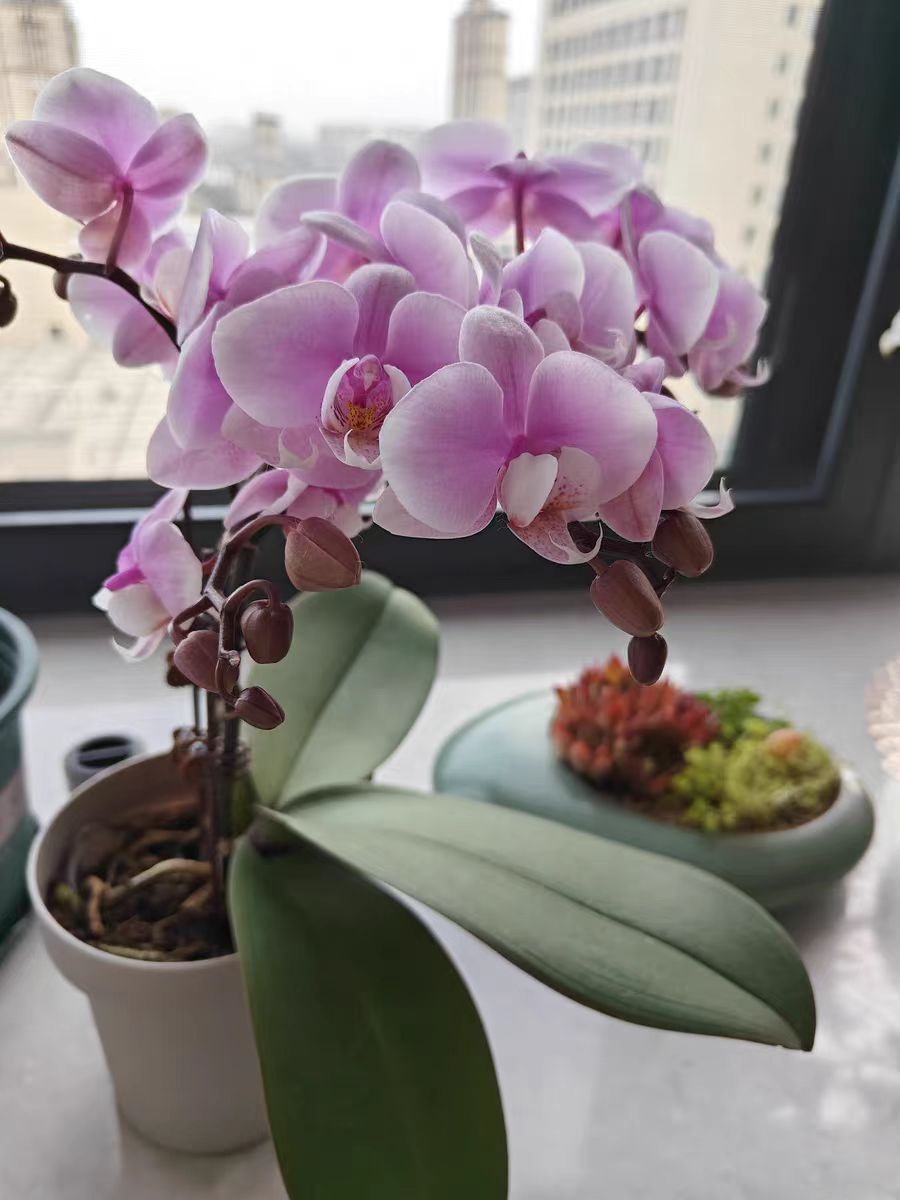Light is crucial for the growth of Phalaenopsis. Moderate light is the key to its healthy growth and brilliant blooming, but excessive light can cause a lot of damage to it. Understanding the manifestations and hazards of excessive light exposure in Phalaenopsis can help us detect its "distress signals" in a timely manner and provide appropriate care.
Significant manifestations of excessive light exposure in Phalaenopsis:
Leaf color change: Under normal circumstances, the leaves of Phalaenopsis are uniformly and brightly green, full of vitality. Once exposed to excessive light, the color of the leaves will change significantly. At first, yellow or white spots will appear on the surface of the leaves. These spots are like the "scars" left by excessive light exposure and will gradually spread. As the light intensity and duration increase, the color of the leaves will gradually fade from the original emerald green to light green, or even turn yellow. In severe cases, the leaves will turn white over a large area and lose their original luster, as if the color of life has been drained away.
Leaf scorching: Excessive light exposure can cause the surface temperature of the leaves of Phalaenopsis to rise sharply, resulting in leaf scorching. The edges of the leaves will become dry and charred, as if they have been gently licked by a flame. These dry parts will gradually expand inward, forming irregular burnt edges, which seriously affect the appearance and normal function of the leaves. In more severe cases of scorching, large black patches will appear on the surface of the leaves. The cells in these patchy areas have died and cannot be revived.
Growth stagnation: In an environment with excessive light exposure, the growth rate of Phalaenopsis will significantly slow down, or even stagnate. New leaves are difficult to grow, and even if they do, they will be small, thin, and lack vitality. The originally healthy plant will become short, and its overall shape will no longer be full, losing its due ornamental value. At the same time, excessive light exposure will also affect the flower bud differentiation of Phalaenopsis, resulting in a reduction in the number of flower buds, or even the inability to form flower buds, making it difficult for the plant to bloom.
Serious consequences caused by excessive light exposure in Phalaenopsis:
Impaired physiological functions: Excessive light exposure will disrupt the normal physiological balance of Phalaenopsis. Photosynthesis is the basis of plant growth, but too strong light will inhibit the photosynthesis of Phalaenopsis. On the one hand, excessive light will damage the photosynthetic pigments in the leaves, such as chlorophyll, reducing their content and thus affecting the efficiency of photosynthesis. On the other hand, excessive light will also lead to the accumulation of reactive oxygen species in the plant, triggering an oxidative stress response and causing damage to the cell structure and function. In addition, excessive light exposure will also affect the water metabolism of Phalaenopsis, leading to excessive water loss and making the plant short of water, which affects its normal physiological activities.
Decreased immunity: Phalaenopsis that has been in an environment with excessive light exposure for a long time will have a significant decrease in its own immunity, becoming very vulnerable and difficult to resist the invasion of external bacteria and pests. At this time, various diseases, such as leaf spot disease and anthracnose, are likely to take advantage of the situation, forming lesions on the leaves and stems, leading to plant rot. At the same time, pests such as aphids and spider mites will also visit frequently, sucking the sap of the plant, further aggravating the damage to Phalaenopsis and making the growth situation of the plant even worse.
Plant death: If the situation of excessive light exposure is not improved in a timely manner, the health of Phalaenopsis will continue to deteriorate and eventually lead to death. The leaves will be scorched and withered over a large area, and normal photosynthesis cannot be carried out.
To avoid the hazards of excessive light exposure to Phalaenopsis, it is necessary to provide it with a suitable light environment. It can be placed in a place with scattered light, such as a position near the window indoors but not directly exposed to sunlight, or provide appropriate shading when the sunlight is strong. Only by correctly understanding and dealing with the light problem can Phalaenopsis bloom in its most beautiful state.
What are the manifestations of excessive light exposure in Phalaenopsis?

Share with
Tagged in :



Leave a Reply